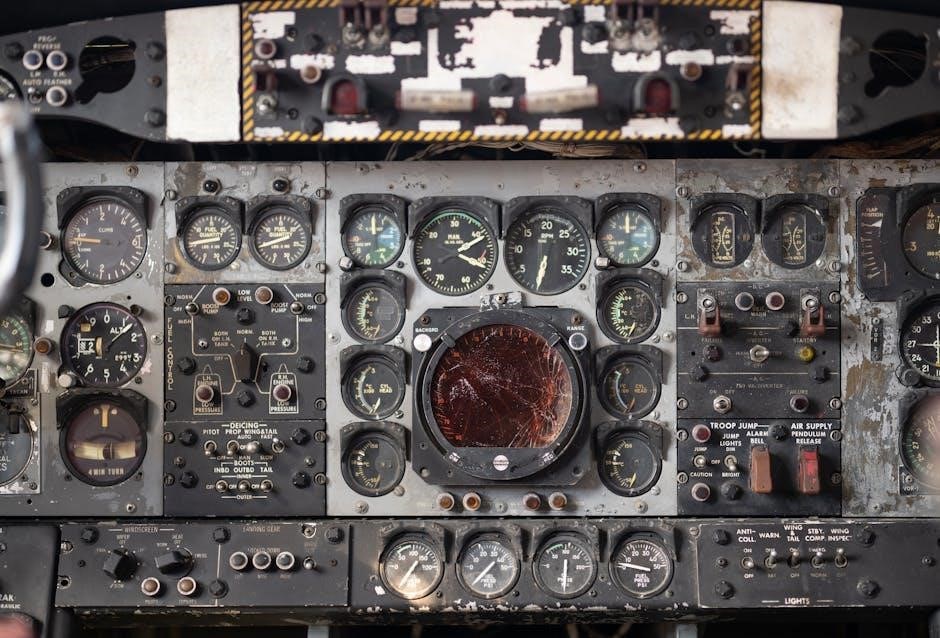
-
By:
- elizabeth
- No comment
behringer air xr18 manual
The Behringer X Air XR18 is a powerful 18-channel digital mixer designed for live performance and studio recording, offering MIDAS preamps and wireless control via tablets.
1.1 Overview of the Behringer X Air XR18
The Behringer X Air XR18 is a compact, 18-channel digital mixer designed for professional audio applications. It features MIDAS preamps, studio-grade effects, and wireless control via tablets. With integrated Wi-Fi and USB audio interface, it supports seamless connectivity for live sound and studio recording. Its robust design and intuitive interface make it ideal for musicians, engineers, and venues seeking versatile, high-quality mixing solutions.
1.2 Key Features of the XR18
The Behringer XR18 stands out with its 18-channel digital mixer, MIDAS preamps, and studio-grade effects. It offers integrated Wi-Fi for wireless control and a USB audio interface for recording. Compatible with iPad and Android tablets, it provides remote mixing via the X Air app. The mixer features 12 buses, 16 programmable MIDAS preamps, and a sturdy stage box design. These features make it ideal for both live performances and studio environments, ensuring high-quality audio processing and flexibility.
1.3 Importance of the Manual for Optimal Use
The manual is essential for unlocking the full potential of the Behringer X Air XR18. It provides detailed guidance on setup, configuration, and troubleshooting, ensuring optimal performance. Whether you’re a novice or an experienced user, the manual offers step-by-step instructions for mastering the mixer’s features, such as MIDAS preamps, wireless connectivity, and effects processing. By following the manual, users can avoid common pitfalls and maximize the XR18’s capabilities for live and studio applications, making it an indispensable resource for achieving professional results.

Key Features and Specifications
The Behringer X Air XR18 is an 18-channel digital mixer with MIDAS preamps, integrated Wi-Fi, USB audio interface, and compatibility with iPad and Android tablets for remote control.
2.1 18-Channel Digital Mixer Overview
The Behringer X Air XR18 is an 18-channel digital mixer offering 16 MIDAS preamps, 6 main XLR outputs, and 12 buses for flexible audio routing. Its compact design supports live and studio applications, with intuitive navigation via the X Air app. The mixer includes 6 AUX sends, 4 subgroups, and a 100-scene memory for seamless performance. It’s built with a durable stage box design for professional-grade durability and portability.
2.2 MIDAS Preamps and Studio-Grade Effects
The XR18 features 16 MIDAS preamps, known for their pristine audio quality and transparency. It includes studio-grade effects like reverb, delay, and compression, customizable for each channel. These effects are designed to enhance live and recorded audio, offering professional-level processing. The preamps provide a wide gain range, ensuring optimal sound capture, while the effects suite allows for creative sound shaping, making the XR18 versatile for various audio applications.
2.3 Integrated Wi-Fi and USB Audio Interface
The XR18 features an integrated Wi-Fi module, enabling wireless control via tablets, and a USB audio interface for direct recording to computers. This dual connectivity enhances flexibility, allowing seamless transitions between live mixing and studio recording. The USB interface supports high-quality audio transfer, while Wi-Fi ensures convenient remote operation, making the XR18 a versatile tool for both professional and home studio environments.
2.4 Compatibility with iPad and Android Tablets
The XR18 is fully compatible with both iPad and Android tablets, offering unparalleled control through the X Air app. This cross-platform compatibility ensures seamless operation, whether you’re using an iPad for its intuitive touch interface or an Android tablet for its versatility; The mixer’s design allows for effortless switching between devices, making it ideal for live performances and studio recordings. This feature-rich compatibility broadens the XR18’s appeal, catering to a wide range of users and workflows.

Setting Up and Installing the XR18
Setting up the XR18 involves unboxing, connecting to your network, and installing the X Air app for remote control. Ensure firmware is updated for optimal performance.
3.1 Unboxing and Initial Inspection
When unboxing the XR18, carefully inspect the unit for any damage. Check all components, including the mixer, power cable, and accessories. Ensure all items are included. Perform a visual inspection for any signs of wear or damage. Familiarize yourself with the mixer’s layout, including the MIDAS preamps and USB interface. Verify that all physical inputs and outputs are clean and functional. This step ensures optimal performance and prevents potential issues during setup;
3.2 Connecting the Mixer to Your Network
Power on the XR18 and locate the integrated Wi-Fi module. Download the X Air app on your tablet or smartphone. Connect to the mixer’s Wi-Fi network using the app. Ensure your device is compatible with the XR18’s wireless capabilities. Once connected, the app will automatically detect the mixer; Follow the on-screen instructions to complete the network setup. This connection enables remote control and seamless integration for live mixing and studio applications. Ensure a stable network for optimal performance.
3.3 Installing the X Air App for Remote Control
Download the X Air app from the Google Play Store for Android or the App Store for iOS devices. Install the app and launch it. Navigate to your device’s Wi-Fi settings and connect to the XR18’s integrated Wi-Fi network. Open the X Air app, which will automatically detect the XR18 mixer. Follow the on-screen instructions to complete the pairing process. Ensure both the app and mixer are updated to the latest versions for optimal compatibility. This setup enables wireless control of the mixer’s functions, allowing for flexible and convenient operation during live performances or studio recordings.
3.4 Updating Firmware for Optimal Performance
To ensure the Behringer X Air XR18 operates at its best, regular firmware updates are essential. Visit the official Behringer website to download the latest firmware version. Connect the mixer to your computer using a USB cable. Open the X Air app or a dedicated firmware update utility, and follow the on-screen instructions to upload the new firmware. Avoid interrupting the update process to prevent potential damage. Once complete, the mixer will reboot with improved features and performance enhancements. Always verify the firmware version matches your device for compatibility.

Understanding the Manual
The Behringer X Air XR18 manual is a comprehensive guide detailing setup, operation, and troubleshooting. It includes quick start guides, advanced configurations, and detailed technical specifications, ensuring optimal use for both beginners and professionals. Regular updates and clear instructions help users master the mixer’s features and resolve common issues efficiently.

4.1 Navigating the Manual Sections
The Behringer X Air XR18 manual is structured into clear sections for easy navigation. It begins with an introduction, followed by detailed setup instructions, operation guides, and troubleshooting tips. Users can quickly locate information on specific features like MIDAS preamps, Wi-Fi connectivity, and USB interfaces. The manual also includes appendices with technical specifications and compliance information, ensuring comprehensive coverage of the mixer’s capabilities and optimal user experience. This organized approach helps users efficiently find the information they need.
4.2 Quick Start Guide for Beginners
The quick start guide provides a concise walkthrough for setting up and using the XR18. It covers unboxing, connecting devices, and installing the X Air app. Beginners learn to navigate the interface, configure basic settings, and start mixing. The guide emphasizes essential features like MIDAS preamps and Wi-Fi connectivity, ensuring a smooth initial experience. Available on Behringer’s website, it offers step-by-step instructions to help new users get up and running quickly with their XR18 mixer.
4.3 Advanced Configuration Options
Advanced users can delve into detailed settings, such as customizing scenes, adjusting routing for aux sends and subgroups, and fine-tuning effects like reverb and delay. The manual also covers ULTRANET integration for expanded control and MIDI mapping for personalized workflows. These options allow for tailored configurations, enhancing the mixer’s versatility for complex live sound or studio environments, ensuring optimal performance tailored to specific needs and preferences.
4.4 Troubleshooting Common Issues
The manual provides detailed solutions for common issues, such as connectivity problems, audio glitches, and firmware updates. It guides users through resetting settings to factory defaults and troubleshooting network configurations. Additionally, it offers tips for resolving issues like low audio quality or lost connections. For persistent problems, the manual directs users to Behringer support resources, ensuring comprehensive assistance for optimal mixer performance and reliability.

Connectivity and Compatibility
The XR18 features integrated Wi-Fi, USB audio interface, and compatibility with iPad/Android tablets. It supports ULTRANET for expanded control and offers versatile physical inputs/outputs for seamless integration.
5.1 Physical Inputs and Outputs Overview
The Behringer X Air XR18 provides 18 input channels, each equipped with MIDAS preamps, ensuring high-quality audio capture. It features 12 bus outputs, 16 programmable MIDAS preamps, and a robust stage box design. The mixer includes USB 2.0 type B interface for audio/MIDI connectivity and wireless control via integrated Wi-Fi. It supports both iPad and Android tablets, enhancing portability and ease of use in live and studio environments with its sturdy construction.
5.2 Wireless Connectivity Setup
The Behringer X Air XR18 features integrated Wi-Fi for seamless wireless connectivity, allowing remote control via iPad and Android tablets using the X Air app. Connect the mixer to your network, then launch the app to access all mixing functions. This setup enables intuitive control during live performances, with the ability to adjust levels, effects, and settings from anywhere in the venue, enhancing flexibility and ease of use for engineers and performers alike.
5.3 USB Audio/MIDI Interface Specifications
The Behringer X Air XR18 features a USB 2.0 Type B interface, enabling high-quality audio and MIDI connectivity. This interface supports 16×16 USB recording and playback, making it ideal for studio and live applications. It allows seamless integration with computers and DAWs, offering low-latency performance and reliable data transfer. The USB interface also supports MIDI control, allowing external devices to command the mixer’s functions. This versatile connection enhances both recording and live sound setups, ensuring professional-grade results and expandability for various workflows.
5.4 ULTRANET Integration for Expanded Control
The Behringer X Air XR18 supports ULTRANET, a high-speed digital networking system, allowing seamless integration with compatible devices like personal monitor mixers and P16-MB stage boxes. This feature enables real-time monitoring and control of up to 16 channels, enhancing flexibility for live sound applications. ULTRANET simplifies setup by eliminating complex cabling and provides reliable, interference-free communication. It also supports daisy-chaining, making it easy to expand your system while maintaining professional-grade performance and control.

Remote Control via Tablet
The Behringer X Air XR18 enables intuitive remote control via the X Air app, compatible with iPad and Android tablets, offering wireless mixing convenience and portability.
6.1 Downloading and Installing the X Air App
The X Air app is available for download on both iPad and Android devices via the App Store and Google Play Store. Ensure your tablet is connected to the internet and search for “X Air” in the app store. Download and install the app, then follow the on-screen instructions to complete the setup. The app allows remote control of the XR18 mixer, enabling wireless mixing and configuration. Visit the Behringer website for the latest version and manual.
6.2 Configuring the Mixer for Tablet Use
Connect the XR18 to your network and enable its Wi-Fi access point. On your tablet, join the XR18’s network and launch the X Air app. Select the XR18 from the app’s device list to establish a connection. Ensure both devices are on the same network for seamless control. The mixer’s settings will sync with the app, allowing you to adjust levels, effects, and routing remotely. Refer to the manual for detailed connection steps to ensure a secure setup.
6.3 Navigating the App Interface
The X Air app offers an intuitive interface designed for easy navigation. The Home screen displays a overview of your mixer setup, while the Channel section provides detailed controls for each input. Use the Effects tab to access built-in processors, and the Routing section to configure aux sends and subgroups. Swipe left or right to switch between channels or use pinch-to-zoom for precise fader control. The interface is optimized for touch functionality, ensuring smooth adjustments during live performances or studio sessions.
6.4 Customizing the Mixer Settings Remotely
Customizing mixer settings remotely is seamless with the X Air app. Adjust EQ, compression, and effects for individual channels or groups. Users can save custom presets for quick recall during performances. The app allows real-time tweaking of levels, pans, and effects, ensuring optimal sound quality. Compatible with both iPad and Android tablets, the remote interface mirrors the mixer’s layout, making it intuitive to fine-tune settings on the fly. This flexibility enhances creativity and efficiency for engineers and performers alike.

Audio Routing and Signal Flow
Understand how audio signals flow through the XR18, from input to output. Learn to route signals efficiently using aux sends, subgroups, and effects for precise mixing control.
7.1 Understanding the Signal Flow
The XR18’s signal flow begins with input sources connecting to the mixer’s channels. Each channel processes the signal through gain, EQ, and compression before routing to subgroups or aux sends. The main mix bus combines these processed signals, while effects and processing are applied as needed. Outputs are then sent to speakers, recorders, or other devices, ensuring a clear and controlled audio path from start to finish.
7.2 Configuring Aux Sends and Subgroups
Configuring aux sends and subgroups on the XR18 allows for flexible audio routing. Assign channels to subgroups for easier control of multiple signals simultaneously. Aux sends enable sending audio to external processors or monitors. Use the X Air app to route signals to aux buses and subgroups, ensuring precise control over levels and destinations. This setup is ideal for creating custom monitor mixes or isolating specific audio elements during live or studio applications.
7.3 Setting Up Effects and Processing
Setting up effects and processing on the XR18 enhances your audio quality. The mixer offers built-in studio-grade effects, including reverb, delay, and compression. Use the X Air app to assign effects to individual channels or groups. Adjust parameters like decay time or threshold to tailor the sound. For advanced processing, route signals through external effects using aux sends. This ensures your audio is polished and professional, whether for live performances or studio recordings, utilizing the XR18’s robust effects suite effectively.
7.4 Managing Audio Levels and EQ
Managing audio levels and EQ on the XR18 ensures balanced and clear sound; Use the channel faders to adjust input levels, monitoring via the LED meters to avoid distortion. The 4-band parametric EQ allows precise tone shaping—boosting highs for clarity or cutting lows to reduce rumble. Apply these adjustments per channel or to main outputs. Save your EQ settings as presets for consistent sound across sessions. This feature-rich EQ section helps tailor your audio for optimal performance in live or studio environments.

Effects and Processing
The XR18 offers high-quality, built-in effects like reverb, delay, and compression, providing flexibility for live and studio applications. Customize effects per channel or globally and save presets for quick recall, ensuring consistent and professional sound processing.
8.1 Overview of Built-In Effects
The Behringer X Air XR18 features a comprehensive suite of built-in effects, including reverb, delay, chorus, and compression. These effects are designed to enhance audio quality and provide versatility for both live performances and studio recordings. With multiple preset options and customizable settings, users can tailor effects to suit specific needs, ensuring professional-grade sound processing. The intuitive interface allows for easy navigation and adjustment, making it accessible for both novice and experienced engineers.
8.2 Using Reverb, Delay, and Compression
The Behringer X Air XR18 offers powerful effects like reverb, delay, and compression to enhance sound quality. Reverb adds spatial depth, while delay creates rhythmic interest. Compression controls dynamics, ensuring consistent levels. These effects can be applied to individual channels or master outputs, with adjustable parameters for tailored sound shaping. The intuitive interface allows for precise control, enabling engineers to achieve professional-grade audio processing with ease. These tools are essential for polishing live performances and studio recordings effectively.
8.3 Customizing Effects for Different Channels
Customizing effects on the Behringer X Air XR18 allows tailored sound shaping for each channel. Users can assign specific effects like reverb or delay to individual channels, ensuring each instrument or vocal stands out. The XR18’s interface enables easy adjustment of effect parameters, such as decay time for reverb or feedback for delay. This customization capability enhances flexibility, making it ideal for diverse live performances and studio recordings where unique processing is required for each channel to achieve the desired audio outcome.
8.4 Saving and Recalling Effect Presets
The Behringer X Air XR18 allows users to save and recall custom effect presets, ensuring consistency across performances. This feature is particularly useful for live sound engineers and studio producers who need to reproduce specific audio settings. Presets can be stored and easily accessed via the X Air app, enabling quick adjustments during gigs or recording sessions. This functionality streamlines workflow, saving time and enhancing creativity by allowing seamless transitions between configurations.

Maintenance and Troubleshooting
Regularly clean the mixer to prevent dust buildup and ensure optimal performance. Troubleshoot common issues like connectivity problems or audio glitches using the manual’s dedicated section. Resetting the mixer to factory settings can resolve persistent issues, restoring default configurations for a fresh start. Proper care extends the lifespan of your XR18.
9.1 Cleaning and Caring for the Mixer
Regular cleaning is essential to maintain the XR18’s performance and longevity. Use a soft, dry cloth to wipe the surface and controls, avoiding harsh chemicals. For stubborn stains, lightly dampen the cloth with water, but ensure no moisture enters the ports or knobs. Avoid exposing the mixer to extreme temperatures or humidity. Store it in a protective case when not in use to prevent damage. Dust buildup can affect functionality, so clean vents and connections regularly. Always follow the manual’s care guidelines for optimal maintenance.
9.2 Common Issues and Solutions
If the XR18 experiences connectivity issues, restart the mixer and ensure Wi-Fi is enabled. For audio dropouts, check cable connections and buffer settings. Firmware updates can resolve bugs; visit Behringer’s website for the latest version. If effects malfunction, reset them to default settings. For distorted audio, adjust input gain levels and ensure proper signal flow. Consult the manual or contact support for persistent issues. Regular updates and proper configuration help maintain smooth operation and prevent common problems.
9.3 Resetting the Mixer to Factory Settings
To reset the XR18 to factory settings, press and hold the “Home” and “Store” buttons while powering on. This restores default settings, clearing all custom configurations. Note that this erases saved scenes and user preferences. For a partial reset, use the “Setup” menu to reset specific parameters. Always back up important settings before performing a factory reset. This process ensures the mixer returns to its original state, ready for a fresh configuration tailored to your needs.
9.4 Contacting Behringer Support
For assistance with the XR18, visit Behringer’s official website and navigate to the support section. Submit a ticket or contact their team directly via email at support@behringer.com. Ensure to include your product serial number and a detailed description of your issue. Registered users can also access priority support. For additional resources, refer to the Behringer website: https://www.behringer.com/.
The Behringer X Air XR18 is a versatile and powerful mixer, ideal for both live and studio use. Its advanced features and intuitive design make it a valuable tool for audio professionals, while the manual ensures users can unlock its full potential. By following the guide, users can achieve exceptional sound quality and seamless control.
10.1 Recap of Key Features and Benefits
The Behringer X Air XR18 offers 18 channels, MIDAS preamps, integrated Wi-Fi, and USB audio interface. Its compatibility with iPad and Android tablets enhances remote control, while studio-grade effects and Ultranet integration expand its capabilities. The mixer’s sturdy design and user-friendly app ensure professional-grade audio processing. These features make it ideal for live performances and studio recordings, providing flexibility and high-quality sound in various settings.
10.2 Final Tips for Getting the Most Out of the XR18
To maximize the XR18’s potential, organize custom presets for quick access during performances. Utilize scenes to save and recall configurations for different gigs or settings. Explore the Ultranet integration for expanded control over compatible devices. Regularly update firmware to access new features and improvements. Engage with the Behringer community for tips and troubleshooting. By mastering these practices, you’ll unlock the full versatility of the XR18, ensuring exceptional audio quality and seamless operation in any environment.